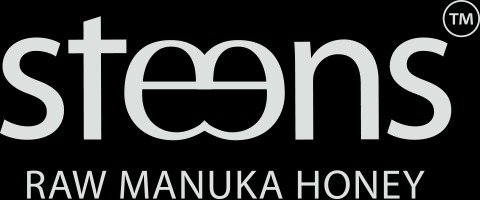What does MGO / MG (Methylglyoxal) mean?
Dan
Last Update 3 jaar geleden
What Does MGO / MG Mean?
The first thing to be aware of is the term ‘active’ on a manuka honey label is not regulated by any independent agency and does not necessarily guarantee any antibacterial activity (or even if the product is genuine manuka honey).
Scientific research has now proven that the naturally occurring compound methylglyoxal is what makes manuka honey so unique compared to other honeys, and its presence is the best indicator of genuine manuka honey with guaranteed antibacterial activity. High levels of methylglyoxal are only found in manuka honey, ranging from 100-800 mg/kg. Other honeys have levels ranging from 0-5mg/kg.
The amount of methyglyoxal (and therefore the strength of antibacterial activity) is naturally higher in some manuka honey, so testing each batch for methylglyoxal content is important to assess both the strength and authenticity of that batch of honey.
In recent years an accurate scientific method to measure the methylglyoxal content of manuka honey has been developed. This has led to a reliable rating system using methylglyoxal levels to indicate to consumers the guaranteed antibacterial strength of a manuka honey product and to certify the honey is genuine manuka honey.
To reflect this, in August 2014 the New Zealand government released new guidelines for the labelling of manuka honey, making methylglyoxal content the only approved numerical value permitted on labels. This gives consumers assurance that they are getting genuine manuka honey that contains the unique active ingredient it is renowned for. These changes must be in place on all labels by 2017.
MANUKA HONEY GRADING SYSTEMS EXPLAINED
There are 3 main components involved in assessing the antibacterial activity of manuka honey, however only one - methylglyoxal - is scientifically validated to reliably reflect stable antibacterial activity:
► Hydrogen peroxide – often used as the basis of ‘active’, 'bioactive' or 'total activity' claims for manuka honey, hydrogen peroxide is actually present in all honey (ie is not a guarantee of genuine manuka honey). However it is very unstable and quickly deactivated by exposure to heat, light or enzyme activity in the body, therefore is unreliable as an antibacterial measure, and does not guarantee the honey is genuine manuka honey.
► Non-peroxide activity (NPA) – discovered in the 1990’s, NPA refers to the unique antibacterial activity of manuka honey unrelated to hydrogen peroxide. The exact component responsible for this activity was not initially known, so the term ‘unique manuka factor’ was used. A test was developed to assess NPA and is the basis of the UMF® rating system. The biggest problem with testing NPA is the variation in results. It can be difficult to get the same rating twice, even for the same sample of honey. Without consistent repeatability of results, the accuracy of this rating system is not completely reliable.
However in 2006 a research team identified the previously undiscovered compound methylglyoxal as the active ingredient responsible for the non-peroxide antibacterial activity, thus methylglyoxal content is now the definitive marker for antibacterial activity. Methylglyoxal does correlate with UMF® ratings (ie high methylglyoxal levels equate to high UMF® ratings), but it is a more specific indication of the antibacterial activity as it directly reflects the concentration of this active ingredient in the honey.
► Methylglyoxal – since being scientifically proven to be the key compound responsible for the antibacterial activity of manuka honey, testing for methylglyoxal concentration is now an accepted industry standard for assessing this antibacterial activity. A naturally occurring and stable compound, it can be reliably detected and quantified using validated scientific measurement. As high levels of methylglyoxal are not present in other honeys, it is also a marker of genuine manuka honey.
Methylglyoxal rating systems indicate the minimum guaranteed methylglyoxal content (and therefore antibacterial activity) of manuka honey eg MGO250+ Manuka Honey indicates at least 250mg/kg of methylglyoxal in that product.
Is MGO / MG the same as UMF?
When Manuka honey's antibacterial properties were first discovered, this antibacterial activity was termed 'Unique Manuka Factor', as the exact compound responsible could not be identified. The lab test developed to test for this activity is the basis of the rating system marketed as UMF®.
However, with the more recent identification of methylglyoxal as the specific active ingredient responsible for the unique antibacterial activity of manuka honey, it is now accepted as a more exact and reliable test and indicator.
Methylglyoxal does correlate with UMF® ratings (ie high methylglyoxal levels equate to high UMF® ratings), but it is a more specific indication of the antibacterial activity as it directly reflects the concentration of this active ingredient in the honey.
